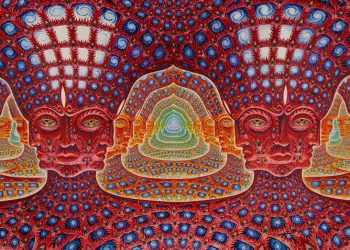For more than 2,600 years, the science behind static electricity has puzzled researchers. While the phenomenon has been observed since 600 BCE, the exact mechanics of how rubbing two objects together creates static charge remained elusive—until now. A team of scientists from Northwestern University claims to have finally cracked the code, revealing that the answer lies in nanoscale imperfections. This groundbreaking discovery was detailed in a recent study published in Nano Letters.
Led by Professor Emeritus Lawrence Marks, the research team identified that the variations on the surface of materials, down to the nanoscale, are responsible for the buildup of static electricity. According to Marks, “People have tried to explain static electricity before, but prior models required assumptions that were difficult to justify.” The team’s new model, however, is based on a fundamental and straightforward concept—different deformations at the front and back of sliding objects create imbalanced charges, which result in an electric current.
Marks and his colleagues began exploring static electricity in 2019. They found that when two materials rub together, tiny imperfections on their surfaces bend, creating friction. This friction, combined with the movement of the materials, generates electrical charges that result in static buildup. The team’s model relies on the idea of “elastic shear,” which occurs when an object resists sliding, creating friction on a nanoscale level. As the friction accumulates, the difference in electrical charges between the deformations on each side leads to a current—and ultimately, the shock we experience.
A Model for a New Understanding
The team’s newly developed model accurately calculates electrical current produced by static electricity, aligning closely with experimental results across various scenarios. This model offers a previously unavailable tool for scientists, allowing them to better understand how static electricity works in real-world applications.
While static electricity is commonly associated with everyday situations—like hair standing on end after rubbing a balloon or getting shocked by a doorknob—its influence is far more profound. Marks notes that even small instances of static electricity can have significant effects. For example, the static charge generated by a coffee grinder can subtly alter the flavor of the beans. In more serious cases, static electricity has been linked to dosing issues in powdered medicines and is even considered a likely factor in industrial fires. In fact, the infamous Hindenburg disaster may have been caused by a static spark.
The Cosmic and Industrial Impact of Static Electricity
Beyond everyday occurrences, static electricity plays a critical role in shaping the universe. “The Earth wouldn’t be the planet we know without static electricity,” Marks explains. “The clumping of particles that eventually formed planets occurred due to the static charge created by colliding grains in space.” This insight underscores just how deeply ingrained static electricity is in the fabric of our lives—and the cosmos.
By finally understanding the nanoscale mechanics of static electricity, industries can improve safety protocols, prevent accidents, and enhance the efficiency of products ranging from coffee grinders to pharmaceutical powders. This discovery opens doors to a deeper exploration of how electrical forces shape our world, offering valuable insights into both ancient mysteries and modern technologies.
As scientists continue to unravel the mysteries of static electricity, this breakthrough promises to revolutionize our understanding of materials science. Future research could explore the broader implications of this discovery, potentially leading to innovations in technology and safety across a wide range of industries. Static electricity, once considered a simple curiosity, is now understood to be a driving force in both our daily lives and the universe itself.











